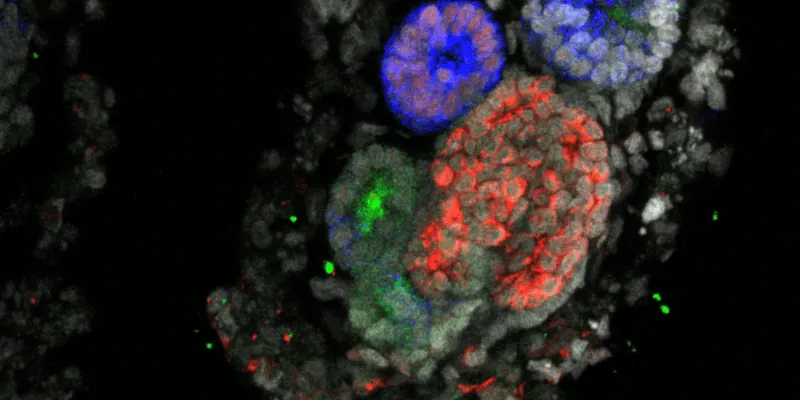
Revolutionizing Kidney Disease Research: The Rise of Organoids
2025-08-26
Author: Daniel
In the face of countless patient losses during his career as a nephrologist, Ryuichi Nishinakamura felt an overwhelming frustration that propelled him into research. Now a leading figure at Kumamoto University, his insights into kidney development have led to a groundbreaking innovation: kidney organoids.
These miniature organ systems, crafted in the lab, mimic the functioning units of human kidneys and signal a possible turning point in drug discovery and disease research. With chronic kidney disease affecting over one in seven adults in the U.S., this work couldn't come at a more critical moment.
The Challenge of Kidney Disease Research
Historically, kidney disease research has been hampered by its complexity. The kidney comprises various specialized cells, making it challenging to replicate in laboratory settings. Traditional animal models have offered valuable insights, but genetic differences between humans and animals lead to unreliable outcomes.
Many animal studies fail to account for comorbidities common in older patients, thereby limiting their applicability to human health. This is where organoids shine, providing a more faithful representation of kidney structure and function.
Creating Diseases in a Dish
Organoids allow researchers to recreate kidney diseases directly in the lab by modifying genes or using cells from patients suffering from specific conditions. One of the primary targets of this research is polycystic kidney disease (PKD), a genetic disorder that affects about 500,000 Americans. It leads to the formation of cysts that can ultimately damage kidney function.
Until the advent of organoids, effective study and treatment options were limited. Benjamin Freedman, a researcher at the University of Washington, notes that treatments successful in animal models frequently falter in human trials. Organoid technology aims to bridge that gap by providing a platform for testing theories and potential drugs more effectively.
Navigating Towards New Treatments
Recent breakthroughs have already pointed to new avenues for treating PKD. Freedman's research identified a compound that exacerbates cyst formation but also suggests that fine-tuning muscle contractions in kidney tubules could prevent cysts from forming. His work is informing the search for drug candidates that could make a real difference for patients.
The Future of Organoid Research
Despite their promise, kidney organoids are still a work in progress. While aesthetically captivating, they lack many characteristics of fully functional kidneys, including the ability to produce urine and the presence of critical blood vessels. Reproducibility is another challenge as the development of organoids can vary.
Some researchers, like Andrew McMahon at USC, are exploring simpler models focusing on specific cell types, while others strive for more complex organoids that better mimic real kidney function.
Hope on the Horizon
Nishinakamura is tirelessly working towards creating a fully functional kidney through organoid technology. His vision includes not just better disease models but also the engineering of transplantable organs.
As he reminds his students, "Don't say impossible. Everything can be possible." The journey to fully realize the potential of kidney organoids will require concerted effort, but the goals are monumental: to find new treatments, and one day, create functional replacements for those suffering from kidney disease.



 Brasil (PT)
Brasil (PT)
 Canada (EN)
Canada (EN)
 Chile (ES)
Chile (ES)
 Česko (CS)
Česko (CS)
 대한민국 (KO)
대한민국 (KO)
 España (ES)
España (ES)
 France (FR)
France (FR)
 Hong Kong (EN)
Hong Kong (EN)
 Italia (IT)
Italia (IT)
 日本 (JA)
日本 (JA)
 Magyarország (HU)
Magyarország (HU)
 Norge (NO)
Norge (NO)
 Polska (PL)
Polska (PL)
 Schweiz (DE)
Schweiz (DE)
 Singapore (EN)
Singapore (EN)
 Sverige (SV)
Sverige (SV)
 Suomi (FI)
Suomi (FI)
 Türkiye (TR)
Türkiye (TR)
 الإمارات العربية المتحدة (AR)
الإمارات العربية المتحدة (AR)